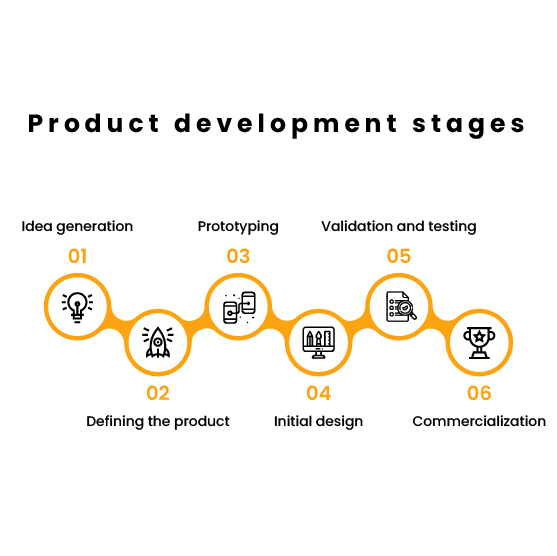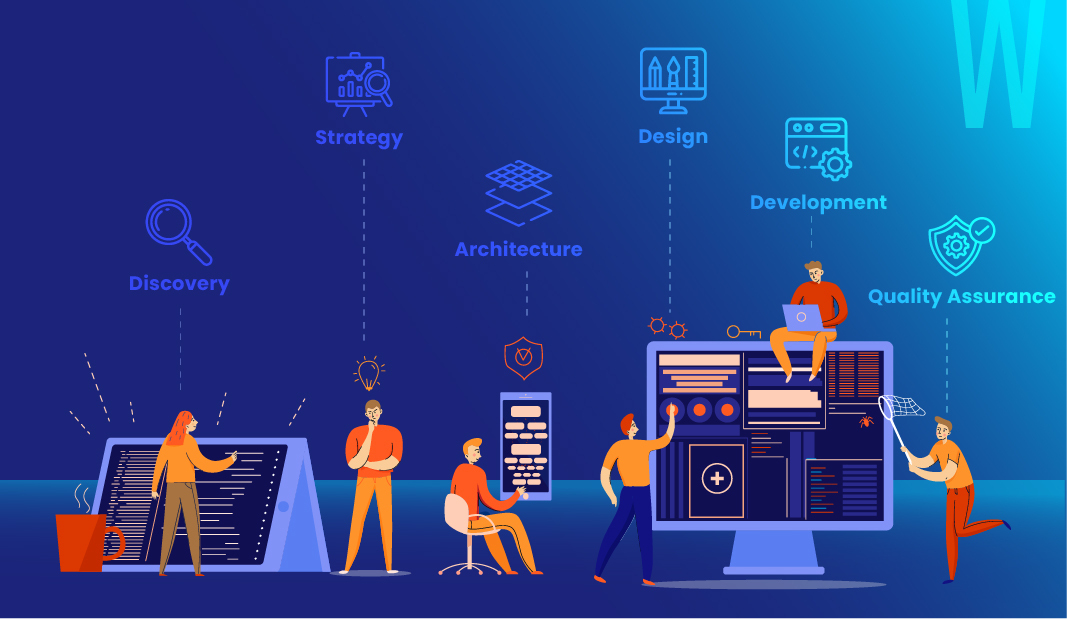TABLE OF CONTENT
In India, the growth of startups has been almost doubling since 2016, and our market analysts identify digital as the primary driver for this increase in number. The government has centered its development strategy around digital, relying heavily on its capabilities to deliver and capture value at scale. However, on the flip side, for every Indian using the internet, there is one who is unable to access it, says a report. If this is the case, then how efficient can our tech-centered product development strategies be for the people of India?
Addressing this point of inefficiency in a tech strategy or rather the inequality that comes along with our fundamental approach to tech must happen at the level of solutions providers. As an IT company, we are rather quick to pounce on a problem trying to find a solution than understanding its different dimensions. While it’s true that design thinking will take care of the “empathy” part, and marketing will stress on it while selling the solution, empathy alone is simply not enough.
For a digital product to truly deliver value to its target users, the people they are targeting must be a part of the product development team instead of just being the validator at the end of the development lifecycle. And skipping this simple step is how only a segment of society reaps the benefits of technology.
Take the COVID pandemic, for instance. Education providers were forced to get into the digital space to keep their engines running. Students across the nation were also forced to adapt to this new reality of education, and what seemed impossible or unreal a year ago was broken overnight! It is not an exaggeration to say that edtech platforms revived the education landscape of the whole country. Education institutions partnered with technology service providers to build these edtech platforms in a short window, and it’s functional for the most part, but accessible? That’s an entirely different story!
The importance of design thinking: How realistic is the dream to build inclusive digital products?
It’s really difficult to define inclusivity in a digital platform. It’s highly subjective, and the concept of inclusivity itself continues to evolve along with the user. Despite the layers of social, economic, political, and philosophical principles covering the true meaning of inclusivity, companies have to understand that it’s a promise they can deliver.
Instead of looking at inclusivity as a goal, companies should see it as a journey. Building an inclusive product that envelopes the entire consumer segment is nothing but a utopian dream. But what companies can realistically achieve is by creating the space for inclusivity for one user at a time!
Product development teams often think that they have to start from scratch to build inclusive products, but all they have to do is focus on diversifying the experience they deliver with their product to the users. This comes along with a huge risk as there is room for error, and may affect the overall tone of your product.
How did building edtech platforms for the Indian and US markets teach us about inclusivity?
We were one of the many technology companies that helped education providers deliver their services by bypassing the pandemic restrictions. We did the whole shebang- ideate, iterate, strategize, empathize, design, and built a prototype that was “innovative, cutting-edge, ultra-realistic” – an edtech platform that recreates the real-time classroom environment. At least, we thought we did.
I mean, the platform was and is state-of-the-art, but it was designed for the students of the USA, where the internet is more of a utility. The platform was hugely successful, and our client thought the model will recreate the success in the Indian market, too, but the Indian market had different plans for our client.
Internet in India is still a luxury. As mentioned in the beginning, for every person using the internet, there is one with poor or no internet accessibility. People and their demographics are more diverse in the Indian market. Education providers in India had to solve two things- the pandemic and students’ lack of digital access. While we cannot overlook the importance of traditional design thinking practices, this lack of digital access is one of the primary reasons why we think empathy alone is not enough to build an inclusive digital platform/product.
However, for our client, we helped them redesign the platform to stream classes even with minimum internet connectivity. This could look simple at the surface, but a report states that tens of thousands of students missed out on basic education as a result of poor/zero digital access. But the national skill development of India was too focused on adding 400+ online courses to their portal as their way of helping India achieve a 100% education rate, which if you think about it under this new context, is wasted.
It’s a good thing that governments are pro-digital, but they have to understand the very DNA of the digital to deliver true value with it. Digital technologies are something that people build, and at the core of these innovations are the people and the ideas that they believe in. Most of the time, digital products become a reflection of their makers than a medium that actually empowers people. And that’s what companies like Microsoft, Amazon, Google, and many others are trying to break out of by building an ecosystem that’s truly inclusive of their users.
You can view more about our EdTech solutions work here!
Product development stages
There is no set process for product development, and the process depends on the nature of your product and the resources at your disposal. However, a typical product development process looks like this-
- Idea generation
- Defining the product
- Prototyping
- Initial design
- Validation and testing
- Commercialization

How can your product development process align with your strategy for digital inclusion?
The solution is to make the makers of tech make inclusivity a priority, and this is how you can do it-
- Create a diverse team that consists of people from the target segments
- Establish scenarios that eliminate stereotypes and break predefined notions about your users
- Intentionally make space for inclusivity. Empathy alone is not enough, but that’s where you should start.
- When it comes to digital, accessibility is the first step for inclusivity
#Create a diverse team that consists of people from the target segments
The difference between designing “with” and “for” is huge, and by making this shift, the product development team instinctively addresses the needs and wants of the users. What digital products aim to do is capture and deliver experience through a medium, so it’s only right for the people who leverage this medium to think of inclusivity. Where most product development teams fail is when they try to finish building the perfect product at the initial launch. Digital products are constantly evolving and the best software product development teams will rather focus on creating the space for the digital product to evolve than pour their efforts into building the perfect product, which will soon be outdated by the time they launch it.
How to do it
Create multiple co-creation channels within and outside your organization. This will allow for the transfer of knowledge, expertise, and most importantly, experience from various sources. The goal is to bring in perspectives that are “uncommon” for the current team. So, making the team more diverse is one of the more practical solutions. Product engineers must encourage their users to point out gaps in their platforms. And everyone in the product development team must be a part of this feedback loop, as it brings a constant mix of views to the core engine.
#Establish scenarios that eliminate stereotypes and break predefined notions about your users
For digital products to be universal, the product development team must break out of the conventional box of ideas that labels their users even before they get to know them. Or in simple terms, don’t fall into the infinite stereotypes based on your users. And the easiest way to solve this is through proper representation of your users in the product development team. But you can also leverage behavioral science and psychoanalysis to fully understand your user, and adjust your assumptions accordingly.
The best example of this is the evolution of emojis. At the beginning of the social media revolution, emojis were one-dimensional. Though users found it new and exciting, many users didn’t relate to emojis until recently. As users from across the globe get on board, more inclusive representations of them are introduced in the emojis, making the platform feel more personal for the user.
Most of the time, the need for these changes is subtle and it takes months or even years before product development teams identify these as a relevant problem, but the right amount of representation at an earlier stage will help you identify and address this gap much sooner than later.
How to do it
Focus on building personalized platforms for the users. Questions like “how does a user use my platform?” and “why does the user use my platform?” can help you point towards the right direction in crafting the user experience. If you are an industry leader or someone with enough experience, navigating through such problems, it may be instinctive for you. However, digital is an entirely different medium, and it would be better to follow a data-driven approach when it comes to delivering the right experience in such a volatile and dynamic platform.
#Intentionally make space for inclusivity. Empathy alone is not enough, but that’s where you should start.
Define inclusivity. This may seem like a no-brainer, but you would be surprised to see the different versions of the idea of inclusivity for the people sitting right next to you. However, to deliver an inclusive digital product, the team must move forward with a singular idea of inclusivity. Build cross-functional teams within the organization to identify the potential aspects of inclusivity that your product development team could cover. Instead of building a product and aligning towards your idea of what inclusivity is, embed the idea in your core product development lifecycle. This will enable your team to treat them as “business problems”, making the abstract concept more tangible.
How to do it
Create metrics for what you define as inclusivity by the team, and make sure you treat this like any other metric you may track. Create your product experience guidelines even before you start prototyping. Your product ratings or the feedback loop should be more conscious of this factor. This will allow your team to expand the scope for inclusivity in the product and make it work for both your business and the users.
#In digital, accessibility is the first step for inclusivity
To deliver on the promise of inclusivity, we have to understand what the digital platform means to people. For some, digital is a fundamental fabric of their lives, while for others, basic digital capabilities are a luxury. So, the gap is created when digital companies set out on their journey to treat all their customers equally because, in reality, they are not! When digital is not accessible to roughly 37% of the global population, your solutions, no matter how innovative, practical, or cheap, will bypass a significant chunk of your target audience.
How to do it
At W2S Solutions, our design teams solve the accessibility problem first. By understanding how accessible is digital for the target audience, we infuse inclusivity into the core product development process. For example, we had to work with the Indian government in building a data-driven disaster management system. The challenge was to build such a high-end platform for various user archetypes. People who access the platform include data scientists, experts from the meteorology department of India, first responders, security personnel, and many other government officials. So, the degree of familiarity of these audience groups with the digital, and cultural relevance of the platform was the priority of the design team. If not, the platform would be inaccessible to our target group, and the impact will probably be little to non-existent.
As one of the leading software development companies, we have built digital platforms and products for our global clients to simplify, optimize, and deliver impact that puts them ahead of the competition. With a dynamic team, we make innovation feasible for your business. For more information, feel free to connect with our representatives.
Frequently Asked Questions
The software development lifecycle can be divided into 5 primary phases-
planning
designing
developing
testing
deploying
Digital inclusion is the ability of a user or a segment of users to access the digital medium and leverage its capabilities to create, capture, and deliver value to their lives and the society.
Get inspired!
Subscribe to our newsletter and get updates on how to navigate through disruption and make digital work for your business!




